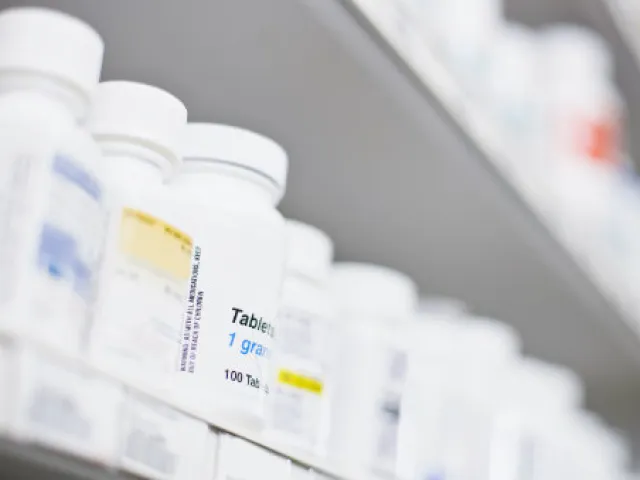Table of contents
On September 24, the FDA announced that it does not intend to take enforcement action against wholesale distributors who do not verify returned drug products before they are resold—as required under the DSCSA verification requirement for saleable returns—before November 27, 2020. Shortly after the announcement, TraceLink checked in with Henry Schein, a leading wholesale distributor of medical and dental products and solutions, to discuss the business impact of saleable returns and why Henry Schein remains focused on hitting the FDA’s original deadline.
Saleable returns are a compliance and a customer service challenge
Henry Schein operates through a centralized and automated distribution network serving more than 1 million customers, with a selection of more than 120,000 in-stock products; more than 180,000 additional products available as special-order items; and a portfolio of more than 300 clinical, technology, and supply chain solutions.
"The ability to verify saleable returns is critical for Henry Schein to meet customer expectations.” Kim Crabtree, Senior Director of Pharmaceuticals, Henry Schein Medical
For Henry Schein, the DSCSA requirement prompted a thorough review of the annual volume of saleable returns and their impact on revenue, operations, and customer service. The company quickly recognized that the ability to accept product returns was a critical customer service challenge, and immediately began to engage its suppliers to ensure they would be able to verify their products.
Kim Crabtree, Senior Director of Pharmaceuticals at Henry Schein Medical, says, “The ability to verify saleable returns is critical for Henry Schein to meet customer expectations. When this project first came about, we did an analysis to understand just how much product was being returned to shelf. The numbers were enlightening, and we quickly realized this was a customer service opportunity. Sometimes, orders are incorrect: maybe the customer receives 100 units instead of 10, or they only need 10 units but don’t realize the product is bundled in packs of 25. In some cases, a patient may end treatment early and the customer is stuck with extra units of an expensive medicine.”
“It’s not anyone’s fault,” continues Crabtree, “sometimes we need to take it back, refund the customer, and resell the product if it’s in viable condition and all PDMA and other standards are met. In terms of saleable returns, we’re most concerned about customer satisfaction and our ability to resolve situations that happen every day in this business.”
Timelines for implementation will not change based on enforcement discretion
Henry Schein is focused on achieving the goal of implementing their verification solution and standard operating procedures by the original November 2019 deadline. “There is a common misperception that enforcement discretion is a time extension to delay implementation,” says Gary Tiamsic, Senior Manager of Regulatory Affairs at Henry Schein, “but we need to continue to push for a number of reasons: from a compliance aspect, certainly, but also from a project and resources aspect.”
“We need to build the systems that have been put on the project timelines for this year to make sure this phase of the project doesn’t ‘snowball’ into a demand and resource conflict next year. This will be followed by other projects that we need to continuously work on to make sure we achieve a fully interoperable digital traceability system by the final 2023 DSCSA deadline.”
Suppliers are being asked to provide EPCIS data plus VRS capability
As a member of the Healthcare Distribution Alliance (HDA) and a participant in the group’s saleable returns pilot initiative, Henry Schein saw the inefficiencies of manual verification methods across the industry. “An approach using a verification router service (VRS) and Electronic Product Code Information Services (EPCIS) proved more feasible than error-prone capture of long serial numbers and Global Trade Item Numbers (GTINs) over the telephone or email,” says Tiamsic.
Like many wholesalers, Henry Schein plans on self-verifying returns using product and aggregation data provided by its suppliers as EPCIS transaction data. However, because its suppliers are at varying states in their ability to transfer EPCIS data, Henry Schein had requested that they be able to provide sub-second responses to verification requests via a VRS by the 2019 DSCSA deadline. Being connected to a VRS also ensures that products shipped without EPCIS data—as well as products that are already in Henry Schein’s inventory—can be verified after November 27.
“Our receiving and returns processes need to be efficient and fast,” notes Tiamsic. “If warehouse staff can’t verify returns instantly, they need to set aside the product and move on to process thousands of units. The inability to verify product quickly could affect delivery and availability—especially of medicines that are already in short supply.”
Crabtree adds, “Being able to resell returned product means fewer returns to our suppliers. If we can’t return a product to shelf, it may need to go back to the manufacturer in accordance with the return policy, if that’s part of the agreement. If a supplier cannot provide a verification solution within the timeframe, we ask that they make products 100% returnable, without expiration date windows.”
Master data is critical for system interoperability and accurate verification
In addition to EPCIS transaction data, Henry Schein is asking its suppliers to provide up-to-date product master data to ensure fast and accurate product verification across a vast network of different suppliers.
“We have to understand how the different systems talk with each other,” says Tiamsic. “The key identifier is the product GTIN, a single number that follows the data file down the supply chain to correlate the transaction events back to the product. The GTIN, along with the serial number, is the unique key for the history of that unit and allows us to connect all our systems together so we can exchange data seamlessly.”
What manufacturers need to do now
The scope of the FDA enforcement discretion applies to the DSCSA Saleable Returns Verification requirement for wholesalers and does not indicate any discretionary period for manufacturers, who will still be required to respond to product verification requests within 24 hours.
To avoid the disruption of having to respond to hundreds—or thousands—of verification requests after November 2019, manufacturers need to work closely with their distributors to implement and test their verification solutions. And they need to move quickly: “When we share our technical requirements for sharing EPCIS messages, our suppliers soon recognize that they need to program additional messaging requirements or address gaps in the data we need,” notes Tiamsic. “Historical experiences have revealed the complexities of onboarding trade partners and learning their technologies. If we can learn those ahead of time, we can implement a more streamlined system.”
For Henry Schein’s suppliers, says Tiamsic, “It’s better to start sooner than later. The effort required to create this data exchange ‘superhighway’ is really complicated, especially when there are so many different systems that need to talk to each other. A VRS is more feasible to implement sooner than later. That’s why our timelines aren’t changing and why we are eager to talk with our suppliers about creating a system-driven solution.”
TraceLink: The industry’s only fully integrated saleable returns solution
Henry Schein understands that solving the saleable returns challenge is just the next step in the longer journey toward all-digital product traceability. In choosing TraceLink as its compliance partner, Henry Schein can rely on sub-second VRS performance with integrated master data sharing and EPCIS data exchange to meet both regulatory and trade partner requirements with a single, interoperable saleable returns verification solution.
As the company looks toward the final DSCSA deadline in 2023, Henry Schein can take advantage of TraceLink’s digital supply network to Integrate Once, Interoperate with Everyone™ and quickly onboard new trade partners, deploy and test new applications and solutions, and realize new operational efficiencies from streamlined, all-digital data exchange.








